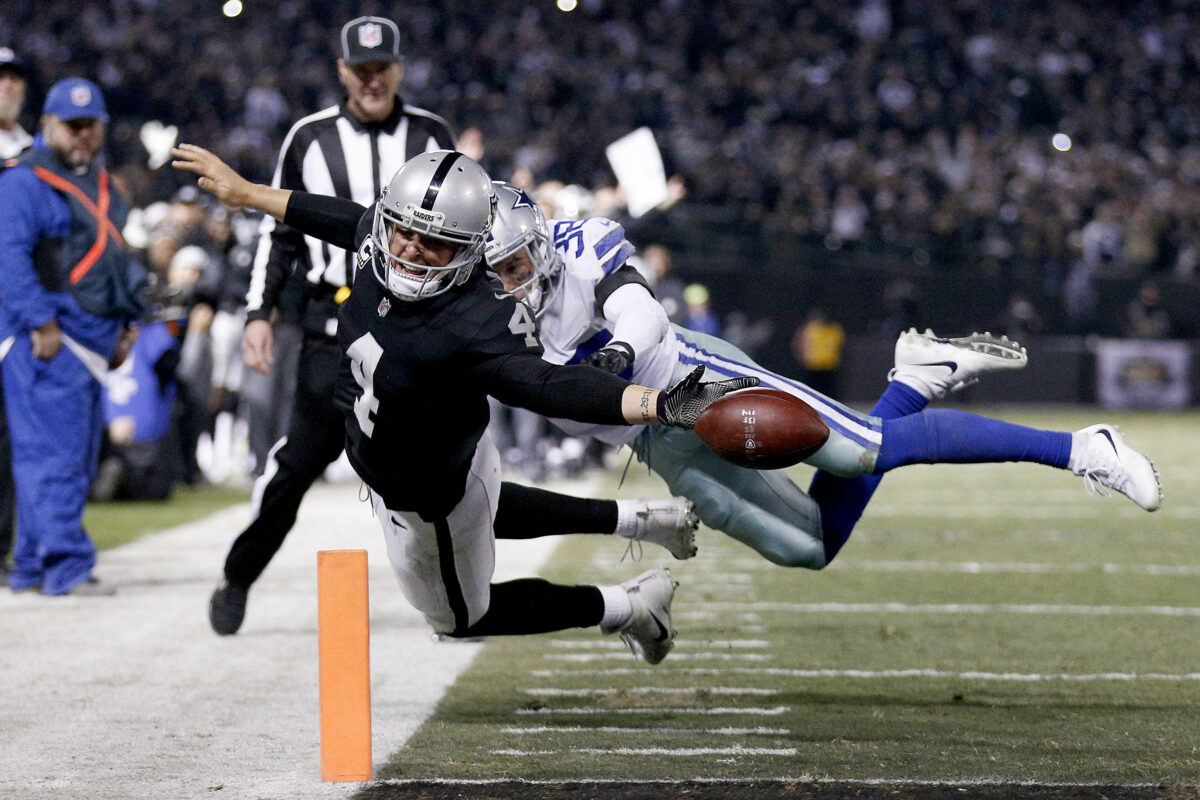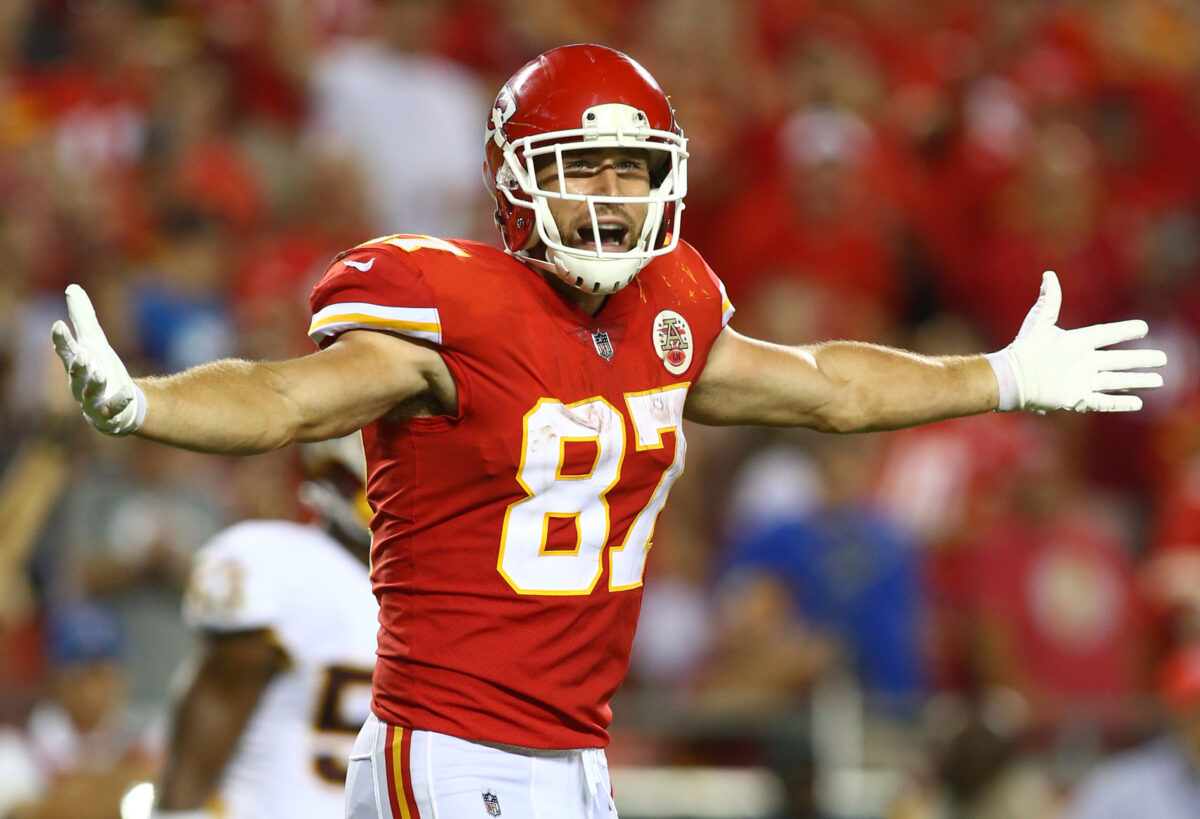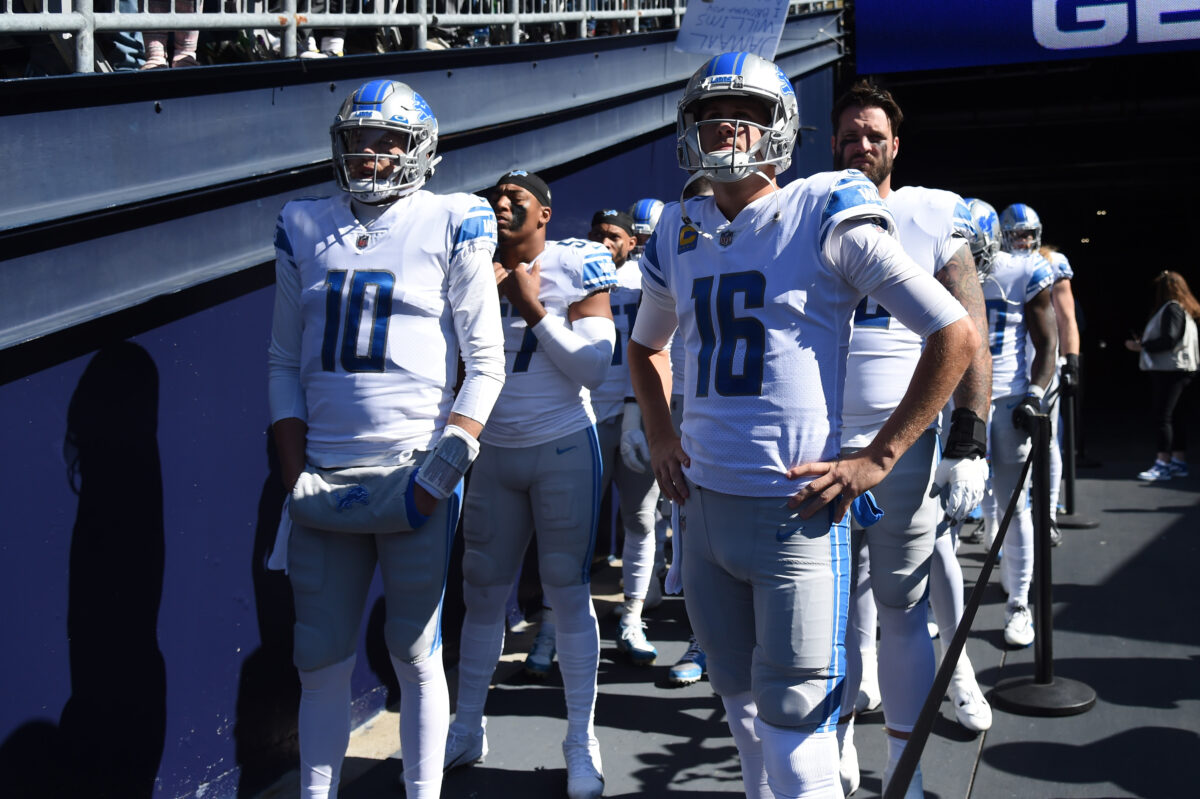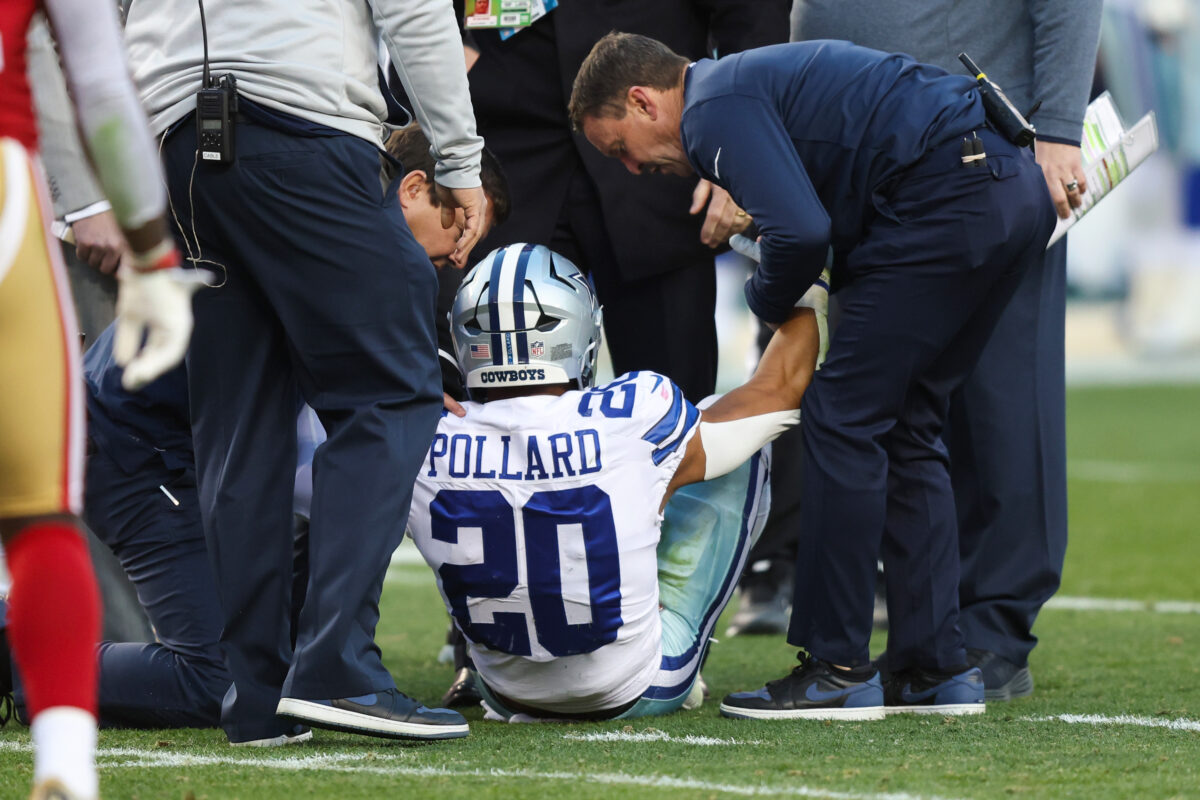Last season’s playoff run ended for the Cowboys with some controversy surrounding the circumstances that forced running back Tony Pollard out of the game with a devastating injury. There was talk after 49ers safety Jimmie Ward’s “hip-drop” tackle on Pollard- a technique that resulted in a fractured fibula and high ankle sprain for Pollard- that the NFL Competition Committee would at least consider banning the move, much like they did the horse-collar tackle in the mid-2000s.
That change to the NFL rulebook hasn’t come about (yet), but the next one that might is another that Cowboys fans are intimately familiar with.
During Sunday’s AFC divisional-round matchup between the Chiefs and Bills, Kansas City wide receiver Mecole Hardman fumbled the ball at the Buffalo 1-yard-line. The ball bounced into the end zone… and then out of bounds.
Wow!!! Fumble out of the end zone saves the bills season.
Mecole hardman has fumbled both times he has touched the ball today! #KCvsBUF #NFL pic.twitter.com/PG2lnIGyJm
— SmashUp Fantasy Sports (@SmashupSports) January 22, 2024
By rule, the ball was turned over to the Bills on their own 20. And every Chiefs fan in America immediately bemoaned the so-called “worst rule in football.”
Here’s how it reads in the rulebook:
“If a ball is fumbled in the field of play, and goes forward into the opponent’s end zone and over the end line or sideline, a touchback is awarded to the defensive team.”
According to several outlets including the Washington Post, the league had already planned to discuss amending the rule this offseason. ESPN’s Jeremy Fowler reported following Sunday’s instance that there’s a “good chance” a change will be made, with “momentum behind [the] NFL correcting” the rule that many consider to be “too harsh.”
Maybe.
If you’re the fumbling team, it does seem too punitive. Your offense has driven down the field and is in a position to score a touchdown simply by breaking the plane of the goal line. If the ball squirts free and rolls out before the pylon, no harm. It’s still your ball; line up and try again. But if that ball travels an extra few inches and rolls out behind the pylon, it’s an automatic turnover and a loss of 20 yards of field position.
One side loves to shout from the mountaintop: Then protect the ball, especially near the goal line.
The other side points out that a turnover/touchback is a disproportionately huge reward for a defense didn’t even recover the loose ball (and didn’t even necessarily cause the fumble in the first place).
That was the argument from Cowboys Nation in Week 17, when CeeDee Lamb had the ball punched out of his hands a yard away from the end zone. It shot forward and then out of bounds after the goal line. Detroit’s ball on the 20, and what looked like it was about to be a 14-3 lead early in the second quarter instead stayed a 7-3 affair going into halftime and eventually became the closest finish Dallas would play all season.
Touchback! @Lions get the ball after a fumble in the end zone 👀
📺: #DETvsDAL on ESPN/ABC
📱: Stream on #NFLPlus https://t.co/urKeZaIvCL pic.twitter.com/8UGeDr5PAD— NFL (@NFL) December 31, 2023
The Cowboys were the beneficiaries of the rule late in the 2017 season, when a timely shove from Dallas safety Jeff Heath caused Raiders quarterback Derek Carr to lose the handle just shy of the goal line. Instead of winning the game on a touchdown scramble in the final 30 seconds, Carr’s fumble through the end zone allowed Dallas to take a knee on the next play- safely on the 20- and walk off victorious.
I want to wish Jeff Heath best of luck with Raiders. This is the play he made against the Raiders by forcing Derek Carr to fumble the football into the endzone for a touchback as the Dallas Cowboys played against them back in Week 15 during the 2017 NFL Season pic.twitter.com/TMFNmmAaWq
— ✭ 🤠 Cowboy X Factor #2023WorldSeriesChampions🥳 (@CowboyXFactor) March 22, 2020
Any new debate around the touchback rule will likely be spicy. Yes, the ball should be protected at the goal line. Yes, there are probably already too many rules that benefit the offense.
But while simply giving the offense another play from the spot of the fumble feels wrong, so does taking the ball away from them entirely when the defense didn’t actually make a recovery.
Some analysts and observers feel the compromise may be moving the ball back to the 20 but allowing the offense to retain possession with a loss of down, sort of a “reverse touchback.”
[affiliatewidget_smgtolocal]
Jonathan Jones of CBS Sports notes that, in looking over rule-change proposals submitted by the competition committee over the past decade, “not one team has offered to change” the current touchback rule and “a league source believes no team has ever put forth a proposal.”
According to a source, per Jones, the committee did discuss the rule after the 2017 season, with Carr’s costly Week 15 miscue still fresh, but they “did not believe a rule change was necessary, believing that it is an exciting play that rewards the defense for an offensive error.”
The latest implementation of the touchback rule, on Sunday in Buffalo, did not ultimately change the outcome of the game, with the Chiefs going on to win despite Hardman’s fourth-quarter fumble through the end zone. But the fact that it happened at all- in a monster playoff showdown that drew over 50 million viewers- could finally force the NFL to address one of the most controversial and quirkiest stipulations in its entire rulebook.
[lawrence-auto-related count=3]
[mm-video type=video id=01hmrr68dpbw680grty7 playlist_id=01eqbwens7sctqdrqg player_id=none image=https://images2.minutemediacdn.com/image/upload/video/thumbnail/mmplus/01hmrr68dpbw680grty7/01hmrr68dpbw680grty7-66adfc43461a82125707040500067966.jpg]
[lawrence-newsletter]












